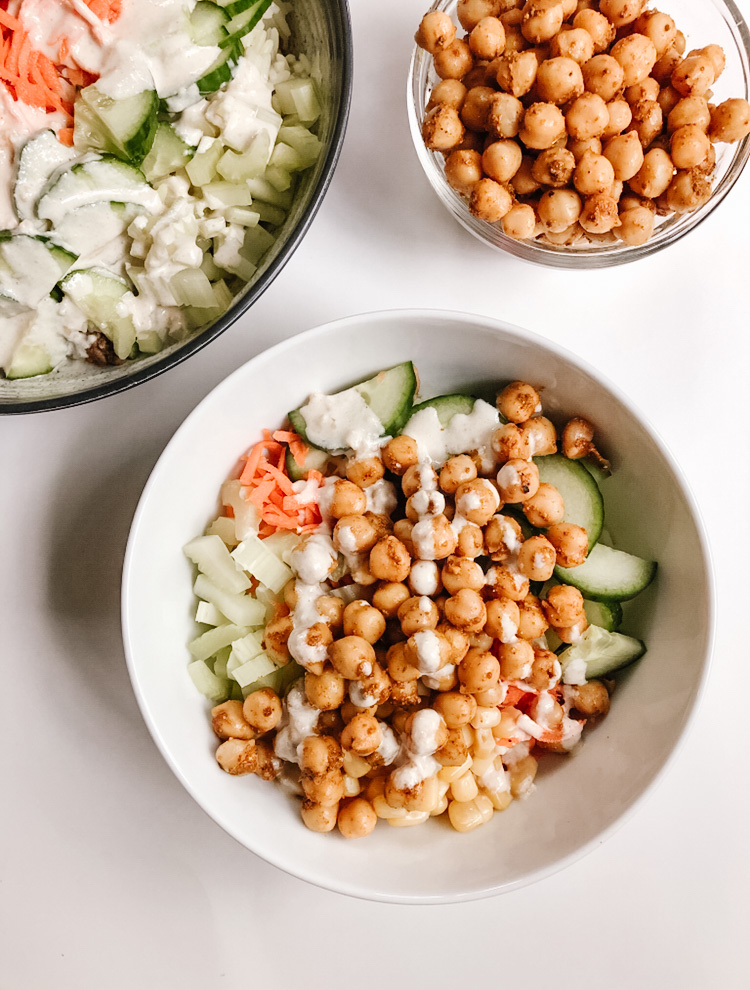SIGN Me up
Sent straight to your inbox every Sunday!
Weekly Meal Plans
to make your life easier
type below and hit enter
SALADS
APPETIZERS AND SIDES
BREAKFASt
Browse by topic
A female empowering non-diet dietitian supporting women who want to create a healthier relationship with food.
Hi I'm Ashlen!
MAINS
SOUPS AND STEWS
DIPS, DRESSINGS & MARINADEs
Search the blog
BEVERAGES
SNACKS & DESSERTS
Fabulous Fibre-Filled Foods
June 9, 2020
Fibre. Definitely not a “sexy” frequently used buzzword but it is becoming more of a hot topic each and every day. People are starting to catch on to some of the benefits of fibre, or at least foods that are rich in this nutrient. This can be seen in many convenience products (ex. Protein bars) as well as other portable snacks like gummies! But what exactly does fibre do and is the added ingredient in man-made snacks the same type of nutrient that can be found in fruits and vegetables? Let’s take a deeper dive into the facts.

What is fibre?
Fibre is a carbohydrate that passes through the digestive system without being digested. The two main types of fibre are soluble and insoluble.
Soluble fibre increases the mass of your stool by absorbing liquid/water. This results in a softer stool, making it easier to pass. Soluble fibre may also help lower blood cholesterol and glucose levels.
Insoluble fibre makes up the structural part of plants and does not absorb water. Instead, it increases the mass of the stool by creating bulk. Consuming insoluble fibre may result in faster motility in the digestive system and lend a hand in bowel regularity.
In addition to the contribution of fibre to digestion, there have been recent studies conducted to determine the role of fibre on mental health, supporting a diverse microbiome and immunity. One explanation for this is the impact that fibre has on the gut. Eating fibre-rich foods provides fuel for our healthy gut bacteria, resulting in a more abundant and diverse microbiome. The relationship between our gut and brain impacts our mental health, immunity and nervous system through what is called the gut-brain axis. There have been studies examining the prevalence of anxiety and depression amongst people with irritable bowel syndrome (IBS), and more are in the works.

What about supplemental fibre?
Manufacturers are starting to notice the food industry gravitating towards convenience and on-the-go foods. For the busy individual, a sit-down breakfast may not be an option. Instead, grabbing a protein bar and a coffee is becoming more common. In order to make up for an entire meal’s worth of fibre, manufacturers have added in supplemental forms of fibre to these bars, protein balls or other accessible foods. Two examples of these supplemental fibres are inulin and psyllium husk.
Inulin:
Often derived from chicory root, vegetables and grains, inulin has been shown to help lower triglyceride levels and improve mineral absorbtion. It is considered a prebiotic; non digestible carbohydrate that acts as “food” for probiotics (healthy bacteria in the gut).
Psyllium (you may have heard of it if you are familiar with Metamucil):
Usually found in a husk or powder form, psyllium is known for its ability to bind to fatty acids and dietary cholesterol, ultimately lowering LDL (bad) cholesterol. Psyllium can also slow down the absorption of carbohydrates after consumption, therefore reducing blood sugar levels.
Although there is no recommended amount of supplemental fibre to consume or NOT consume, it is important to know that increasing fibre intake could be accompanied by undesired gastrointestinal side effects. These symptoms may be more common when eating foods that contain ingredients such as inulin as it is fermented in the large intestine quicker than other forms of fibre. This could lead to excess gas, bloating, digestive discomfort and more.
Most Canadians consume about half the amount of fibre that is encouraged in a day. Depending on your age and gender it is recommended to eat between 25-38 g of fibre per day. To find out how much you currently eat, take note of the foods you consume in a day and their individual fibre content.
TIP: When increasing the amount of fibre-rich foods in your diet, make sure to ramp up slowly while also incorporating physical activity and more fluids. This will help reduce bloating, gas and undesirable digestive issues.

What foods are rich in fibre?
Whole grains: oat/corn bran, rye, bulgar, whole grain, barley, whole wheat
- Look for grain products such as breads, bagels, pitas, wraps, etc. that contain between 2-4g of fibre per serving
- Try a cereal with at least 4g of fibre per serving
Fruit and veggies: split peas, acorn squash, collard greens, avocado, berries, pears, figs, guava
- Try this stuffed acorn squash recipe for dinner
- Whip up some tasty guacamole
- Chop up a pear to add to your oatmeal or eat as a snack
- Add berries to yogurt or on top of cereal
Legumes: Black beans, lentils, navy beans, chickpeas, edamame
- Serve black bean brownies for dessert
- Mix lentils into your favourite soup or stew for added fibre and protein
- Dip vegetables or crackers into hummus
Nuts and Seeds: Flax seeds, almonds, sesame seeds
- Add flax seeds to your smoothie, yogurt or oatmeal
- Chomp on trail mix containing almonds
- Sprinkle sesame seeds onto a stir fry or salad

For any inquiries, please feel free to reach out to me or speak with your registered dietitian or physician.
Resources
https://desireerd.com/what-you-dont-know-about-fibre-might-surprise-you/
https://www.todaysdietitian.com/newarchives/0120p20.shtml
https://www.todaysdietitian.com/newarchives/063008p28.shtml
https://www.todaysdietitian.com/newarchives/0816p34.shtml
https://www.unlockfood.ca/en/Articles/Fibre/Focus-on-Fibre.aspx
https://www.medicalnewstoday.com/articles/324367.php#2
https://cdhf.ca/health-lifestyle/mental-health-and-nutrition/
https://www.todaysdietitian.com/newarchives/0217p10.shtml
https://www.unlockfood.ca/en/Articles/Digestion/Prebiotics.aspx
Leave a Reply Cancel reply
One-on-one consults
All Foods Fit
weekly meal plans
Bachelor in Applied Sciences, Professional Masters Diploma in Dietetics, Diploma in Sports Nutrition from the International Olympic Committee
... Read my full story
Hey, I’m Ashlen!
Credentials
© 2024 Ashlen Leonard. all rights reserved. | privacy policy + Terms | site by sugar studios + Customized by Amanda Mays
Food for a happy and healthy life